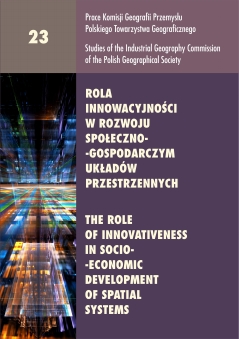Impact of the Innovative Economy Operational Programme’s Funding on the Development of the Polish Scientific Sector
DOI:
https://doi.org/10.24917/20801653.23.9Keywords:
EU funds, financing, Poland, scientific sectorAbstract
Poland is one of the least innovative states among the EU members. Chronic underfunding of the scientific sector - with gross expenditures on R&D below 1% of the GDP - is the most important cause of such situation. The scale on private involvement in R&D activities remains similarly low. Also, focus on basic research, low commercialization and weak science-industry links are major obstacles for the growth of innovativeness. After Poland’s EU accession, European structural funding has given a chance of reducing the arrears in the financing of the scientific sector. The Innovative Economy Operational Programme (POIG), functioning since 2007, became the main tool for financing both R&D projects and scientific infrastructure development in national research centers, higher education and private sector. After almost 5 years of the Programme’s functioning and given the imminent end of the EU’s 2007-2013 financial perspective, one can try to summarize the main effects of the Programme. The aim of this paper is answering the question about the role of POIG in financing the scientific sector in Poland in both regional and sectoral approach. The amount of funding for basic and applied research and technology also remains an important question. The quantitative analysis of number, value and distribution of financing agreements is complemented by case studies, presenting the situation of major beneficiaries of EU funding among Polish higher education establishments. Finally, an attempt to identify the most important obstacles in using the EU funding for scientific sector is made.Downloads
Metrics
References
Balconi, M., Brusoni S., Orsenigo, L. (2008). In Defence of the Linear Model: An Essay. KITeS Working Papers, 216.
Borowiec, M. (2011). Zmiany kierunków kształcenia akademickiego w Polsce. Prace Komisji Geografii Przemysłu Polskiego Towarzystwa Geograficznego, 18, 9–22.
Gierańczyk, W. (2010). Rola własności intelektualnej w budowaniu innowacyjności krajów Unii Europejskiej. Prace Komisji Geografii Przemysłu Polskiego Towarzystwa Geograficznego, 16, 76–86.
Godin, B., 2006. The Linear Model of Innovation: The Historical Construction of an Analytical Framework. Science, Technology & Human Values, 31(6), 639–667.
Godin, B. (2011). The Linear Model of Innovation: Maurice Holland and the Research Cycle. Social Science Information, 50, 569–58.
Landry, R., Amara, N., Rherrad, I. (2006). Why Are Some University Researchers More Likely to Create Spin-offs Than Others? Evidence from Canadian Universities. Research Policy, 35, 1599–1615.
Mansfield, E. (1991). Academic Research and Industrial Innovation. Research Policy, 20, 1–12.
Nauka i technika w 2010 (2012). Warszawa: Główny Urząd Statystyczny.
Rozmus, A., Cyran, K. (2009). Finansowanie działalności badawczo-rozwojowej w Polsce i innych krajach – diagnoza i próba oceny. e-Finanse, 4.
Salter, A., Martin, B. (2001). The Economic Benefits of Publicly Funded Scientific Research: A Critical Review. Research Policy, 30, 509–532.
Sarewitz, D., Pielke, R. (2007). The Neglected Heart of Science Policy: Reconciling Supply and Demand for Science. Environmental Science and Policy, 10, 5–16.
Varblane, U., Dyker, D., Tamm, D., Tunzlemann, N. (2007). Can the National Innovation Systems of the New EU States be Improved? Post-Communist Economies, 19(4), 399–416.
Wieloński, A. (2003). Przemysł nowej gospodarki. Prace Komisji Geografii Przemysłu Polskiego Towarzystwa Geograficznego, 6, 21–25.
Downloads
Published
How to Cite
Issue
Section
License
Articles are published under the terms of the Creative Commons License (CC BY-ND 4.0; Attribution– NoDerivs).

